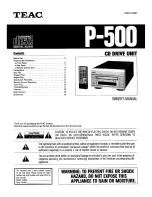
7-32 Process PID Start Speed
Range:
Function:
0 RPM
*
[0 - 6000
RPM]
Enter the motor speed to be attained as a start
signal for commencement of PID control.
When the power is switched on, the frequency
converter will commence ramping and then
operate under speed open loop control.
Thereafter, when the Process PID start speed is
reached, the frequency converter will change
over to Process PID control.
7-33 Process PID Proportional Gain
Range:
Function:
0.01
*
[0.00 - 10.00 ] Enter the PID proportional gain. The
proportional gain multiplies the error
between the set point and the feedback
signal.
7-34 Process PID Integral Time
Range:
Function:
10000.00 s
*
[0.01 -
10000.00 s]
Enter the PID integral time. The
integrator provides an increasing gain
at a constant error between the set
point and the feedback signal. The
integral time is the time needed by
the integrator to reach the same gain
as the proportional gain.
7-35 Process PID Differentiation Time
Range:
Function:
0.00 s
*
[0.00 - 10.00
s]
Enter the PID differentiation time. The
differentiator does not react to a constant
error, but provides a gain only when the
error changes. The shorter the PID differen-
tiation time, the stronger the gain from the
differentiator.
7-36 Process PID Diff. Gain Limit
Range:
Function:
5.0
*
[1.0 - 50.0 ] Enter a limit for the differentiator gain (DG). If
there is no limit, the DG will increase when
there are fast changes. Limit the DG to obtain a
pure differentiator gain at slow changes and a
constant differentiator gain where fast changes
occur.
7-38 Process PID Feed Forward Factor
Range:
Function:
0 %
*
[0 - 200
%]
Enter the PID feed forward (FF) factor. The FF
factor sends a constant fraction of the reference
signal to bypass the PID control, so the PID control
only affects the remaining fraction of the control
signal. Any change to this parameter will thus
affect the motor speed. When the FF factor is
activated it provides less overshoot, and high
7-38 Process PID Feed Forward Factor
Range:
Function:
dynamics when changing the set point.
7-38 Process PID Feed Forward Factor
is active when
is set to [3] Process.
7-39 On Reference Bandwidth
Range:
Function:
5 %
*
[0 - 200 %] Enter the On Reference bandwidth. When the
PID Control Error (the difference between the
reference and the feedback) is less than the set
value of this parameter the On Reference status
bit is high, i.e. =1.
3.9.5 7-4* Advanced Process PID Ctrl.
Parameter group 7-4* is only used if
is set to [7] Extended PID speed CL or [8] Extended PID Speed
OL.
7-40 Process PID I-part Reset
Option: Function:
[0]
*
No
[1]
Yes Select Yes [1] to reset the I-part of the process PID
controller. The selection will automatically revert to No
[0]. Resetting the I-part makes it possible to start from a
welldefined point after changing something in the
process, e.g. changing a textile roll.
7-41 Process PID Output Neg. Clamp
Range:
Function:
-100 %
*
[Application
dependant]
Enter a negative limit for the
process PID controller output.
7-42 Process PID Output Pos. Clamp
Range:
Function:
100 %
*
[Application
dependant]
Enter a positive limit for the
process PID controller output.
7-43 Process PID Gain Scale at Min. Ref.
Range:
Function:
100 %
*
[0 - 100
%]
Enter a scaling percentage to apply to the
process PID output when operating at the
minimum reference. The scaling percentage
will be adjusted linearly between the scale at
min. ref. (
7-43 Process PID Gain Scale at Min.
) and the scale at max. ref. (
Parameter Descriptions
FC 300 Programming Guide
100
MG.33.MB.02 - VLT
®
is a registered Danfoss trademark
3
3
















































